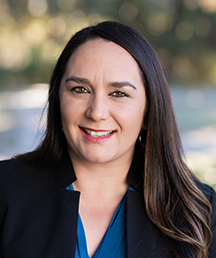• by Stephanie Garcia, Ph.D. • IDRA Newsletter • August 2020 •
 Children have personal experiences with STEM because it is all around them. Families can help students make connections to STEM with their culture, interests, language, home knowledge and community concerns (García, 2019). Educators also can reinforce these connections in ways that expand opportunities for students in STEM and build their STEM identities.
Children have personal experiences with STEM because it is all around them. Families can help students make connections to STEM with their culture, interests, language, home knowledge and community concerns (García, 2019). Educators also can reinforce these connections in ways that expand opportunities for students in STEM and build their STEM identities.
The international Chief Science Officer program launched by the Arizona-based SciTech Institute fosters such opportunities. As IDRA began to lead the program’s expansion in Texas last year and then made adaptations for COVID-19 realities, we ensured the model was radically inclusive of families.
The Chief Science Officer program works by enriching STEM culture and career awareness in schools and by increasing student voice in STEM conversations in the community. These conversations naturally also take place in students’ homes. Building relationships with families and providing resources as they support their children in STEM is one of the greatest strengths of IDRA’s Texas Chief Science Officer program.
For example, our events include sessions designed specifically for families to create a space for critical discussions on topics like students’ STEM identities, career pathways, and coursework that prepares students for college, particularly in STEM fields.
While the Chief Science Officer program provides an inviting structure for participating schools, educators everywhere can create opportunities to engage in STEM conversations with students and families.
STEM Conversation Strategies for Educators
IDRA’s six principles of family leadership support our Education CAFE model for building strong parent-educator partnerships to improve schools and raise students’ academic achievement (Montemayor, 2007; Also see article on Page 1). Educators can consider this model within STEM courses, programs, district initiatives, and more.
For example, the first principle states: “Families can be their children’s strongest advocates.” What does that look like in STEM spaces? Families and role models serve as a support system that can help recognize students’ curiosity toward STEM and help them persist through STEM coursework (Johnson & Vega, 2019; Arreguín-Anderson, et al., 2018).
The sixth principle states, “Families, schools and communities, when drawn together, become a strong, sustainable voice to protect the rights of all children.” This proves to be true when families encourage, nurture and enhance children’s STEM identity (Arreguín-Anderson, et al., 2018). This also means ensuring children have access to high-quality STEM learning experiences and coursework.
Bring the Texas Chief Science Officer Program to Your School!
The Chief Science Officer program empowers middle and high school students to enrich school STEM culture and career awareness by bringing STEM-related opportunities to their schools and local communities.
Watch our Q&A webinar for details.
Hear from CSO students themselves! “Chief Science Officer Students Determined to Promote STEM Despite School Closures.”
According to the STEM Next Opportunity Fund, “Family engagement can be a game-changer for expanding and diversifying the world of STEM and expanding the options for all youth” (2009).
The STEM Next Opportunity Fund offers six promising practices to support families as they encourage their children in STEM:
- Put parents at the center; listen and learn from families.
- Make equity and inclusion primary considerations in family engagement.
- Support a STEM ecosystem that begins and ends with the needs of families.
- Commit resources to support staff, particularly those working in under-resourced communities.
- Evaluate impact on youth and parents to advance #STEM4All.
- Scale programs that have successful track records in supporting innovative approaches, particularly with families who have been underrepresented in STEM.
Ideas for Families and Caretakers
 Family engagement and leadership should be centered within STEM activities and programs. Below are tangible ways to support family engagement in STEM.
Family engagement and leadership should be centered within STEM activities and programs. Below are tangible ways to support family engagement in STEM.
At a park or while on a walk, children can point out plants, wildlife and changes due to weathering. A quick drive around the community can reveal many real-world STEM connections to local resources, businesses and the environment (Garcia, 2019). A birthday party can even include fun STEM activities with balloons or slime.
Here are a few questions to consider to kickstart more conversations.
- STEM is a broad field. What topics does your child tend to talk about the most? What kinds of toys and play activities did your child engage with the most?
- What STEM connections and concepts can you identify and explore within your home? Some examples including cooking, driving, using home appliances and lawn machines, building projects, and gardening.
- In middle school and high school, is your child taking STEM-related courses, including higher level math and science and STEM electives? Are there any special programs offered at your local public school that are tailored toward STEM?
- What clubs, internships, out-of-school organizations and volunteer opportunities can support your child’s curiosity and STEM passion?
- Who are three people the student and family can chat with to ask questions about STEM degrees and career opportunities? Are there teachers or family friends who can share their own experiences or resources with you?
These questions can open the door to more discussions that will strengthen children’s STEM identities. Family members do not need to consider themselves STEM experts. The goal for these conversations is to listen and learn from each other. Together, families, students and educators can foster student conversations about the dynamic world of STEM.
Resources
Arregun-Anderson, M.G., Yuen, T.T., & Bonner, E.P. (2018). (Under)represented Latin@s in STEM: Increasing Participation Throughout Education and the Workplace. Peter Lang International Academic Publishers.
Kekelis, L., & Sammet, K. (April 2009). Changing the Game in STEM with Family Engagement, A White Paper for Practitioners and Field Leaders to Empower Families in STEM. STEM Next Opportunity Fund.
Garcia, S.A. (2019). Pre-service Elementary Teachers Enacting a Critical Race Curriculum in Science: A Multi-case Study, doctoral dissertation. University of Texas at San Antonio.
IDRA. 6 Principles for Family Leadership in Education, infographic. San Antonio, Texas. Intercultural Development Research Association.
Johnson, P., & Vega, M. (October 2019). Strategies for Increasing Girls’ Participation in STEM, IDRA Newsletter.
Montemayor, A.M. (September 2007). IDRA’s Family Leadership Principles, IDRA Newsletter.
Photo: Participants in an IDRA Texas Chief Science Officer community event with CSO students, their advisor and the program director, district champion, mentor, future high school principal and family members.
Stephanie García, Ph.D., is an IDRA education associate and directs the IDRA Texas Chief Science Officer program. Comments and questions may be directed to her via email at stephanie.garcia@idra.org.
[©2020, IDRA. This article originally appeared in the August 2020 IDRA Newsletter by the Intercultural Development Research Association. Permission to reproduce this article is granted provided the article is reprinted in its entirety and proper credit is given to IDRA and the author.]


